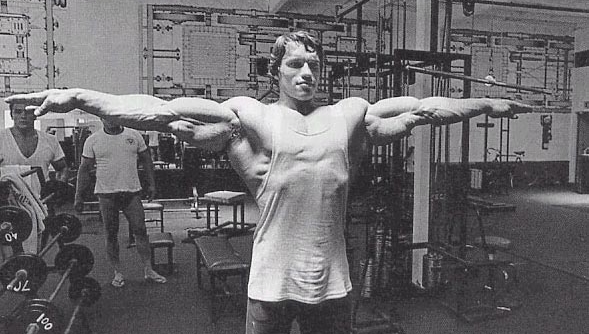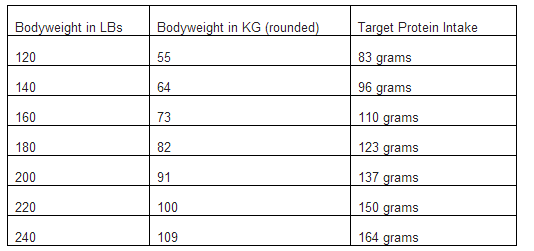The Protein Bible: Part 1 - Introduction


By Kurtis Frank and Sol Orwell
If you’re not paying attention to protein, you’re doing it wrong. In all seriousness, as far as the macronutrients (protein, carbohydrate, and fat) go, protein is perhaps the most important to pay attention to. Although all three are obviously important, it’s common to hear from fans of low-carb or low-fat diets. But ask a room full of people trying to look good if they follow a low-protein diet, and no one will raise their hand. Protein is important.
So most people (who lift) know that protein is important, but with the myriad of protein supplements, there’s a lot of confusion. People don’t know if the claims made are grounded in scientific evidence, or if they are nothing more than the latest marketing claims.
This guide, which we are splitting into four parts, will help clear up protein and how you can utilize it to reach your aesthetic goals. Our four part breakdown:
- Part 1: General info and protein sources
- Part 2: Protein Powders
- Part 3: Protein, and suiting it to your goals
- Part 4: Protein and Amino Acid Timing
We should note that the demands for elite athletes can be a bit more intense – this guide is for the general population who want to be healthy and look good.
Protein in General
Protein recommendations are usually given relative to your body weight, instead of in absolute terms. Unless you are morbidly obese (calculate protein usage based on your target weight), the rough guidelines are:
- 0.5g/kg body weight – this is the Recommended Daily Allowance (RDA) for protein. It’ll keep you alive and in general health. It is literally the minimum.
- 0.5-1.0g/kg body weight – this is a higher range mostly used by health-conscious people or people who are new to exercise and are trying to build some muscle.
- 1.0-1.5g/kg – this is the range which tends to be recommended for building muscle and reaching your athletic goals.
- 1.5-2.2g/kg (1g/lb) – recommended based on anecdotal evidence, but extremely under-researched (the highest dose recommended being around 1.8g/kg [1];
If we look at the evidence we have today, if you are healthy and trying to add on some muscle (and don’t have pre-existing kidney issues), 1.5g/kg of body weight is a good target. For those who are not fans of the metric system, that means roughly 0.7 grams per lb of body weight. And remember – if you are obese, use your target body weight.
To make it really, really simple, here is a chart:

If you are worried about complete or incomplete proteins, don’t be. To summarize briefly, we need a bare minimum of amino acids to live. Different proteins have different amounts of these amino acids. A protein is considered “complete” when, if taking only the bare RDA minimum, that protein will give you all the amino acids you need.
Since we are recommending taking 1.5g/kg of protein, worrying about complete vs incomplete is a waste of time. All the incomplete proteins become “complete” when you are taking 3 times the ridiculously low RDA. Keep your protein levels solid and you don’t need to worry about that.
It is possible that even more protein could be better, but we have no evidence to support that. It could be better, it could be worse, or it could not matter – we just don’t know. There are logical reasons why higher protein intake could be both good for you, and bad for you. So while there is some evidence that muscle protein synthesis scales with the amount of protein you take, (with more being better) [2] [3], there is also a potential “max” [4] .
We take the least-stress approach. Target 1.5g per kg (0.7g per lb) of bodyweight. If you go over, no big deal. Relax.
Protein Sources
We can judge any protein source by:
- Its bioavailability; how well your body can absorb it.
- Amino acid profile; whether it’s complete or incomplete (which becomes irrelevant if you have more than the bare minimum).
- Other nutrients; for example, co-ingested fatty acids, phytonutrients, fiber, etc.
To be honest, all three are kind of over-rated.
Bioavailability can be an issue if your diet includes stuff that inhibits protein absorption. In real-life terms, these anti-nutrients are mostly found in raw soy products (cooked and heat-treated soy products are fine, which includes soy protein), and alcohol.
Since we are eating well above the RDA, more “efficient” sources of protein (aka whey, eggs, casein) do not make a big difference.
If you are eating at our target of 1.5g/kg, don’t worry about bioavailability.
Next up are amino acids. We covered it quickly in the intro, but let’s break it down: an incomplete protein source is one where at least one of the essential amino acids are found in too low a quantity to support basic living functions (assuming you consume the RDA of protein). All protein sources tend to have allof the essential amino acids, but some of them are present in smaller quantities. This issue does not really matter at all, when the overall dietary protein intake is well above the RDA.
Eating at our recommended 1.5g/kg? Don’t worry about amino acids, and don’t worry about BCAAs.
Lastly, we have the extra-nutrients found in different proteins.
Whey and protein have high calcium (a typical scoop has 20-60% of the RDA of calcium). Hemp protein has dietary fiber. Soy iosolate has weak phytoestrogenic compounds that may help menopausal women.
NOTE (Mainly to overly-anxious men): The potency of phytoestrogens in soy isolate is very low. It only affects people with estrogen deficiency, which is what happens in menopause. It’s extremely low in soy concentrate (due to the way it is treated and extracted). If your testosterone is dropping because you ingested soy, the problem is not the soy, but your overall health. Fix your sleep, fix your diet, lift weights, and worrying about soy is like worrying you had one hair fall out.
Dietary protein has its own benefits – some are low-fat, some are high-fat, fatty fish have omega 3s, etc.
If the extra nutrients matter, then your protein choices are based on your need. Do you need more fat? Less fat? Calcium? Choose your protein source accordingly.
Next time – whey, casein, hemp, and other protein powders. Which is the best?
Read more of the protein guide:
- Part 1: General info and protein sources
- Part 2: Protein Powders
- Part 3: Protein, and suiting it to your goals
- Part 4: Protein and Amino Acid Timing
ABOUT THE AUTHOR
Kurtis Frank and Sol Orwell founded Examine.com in early 2011 to help make sense of scientific research on supplementation and nutrition. Independent and unbiased, they recently have released the Supplement-Goals Reference in order to make it easy to figure out which supplements work (and which are hype).
Website: http://Examine.com
Facebook: https://www.facebook.com/Examinecom
Twitter: http://twitter.com/examinecom
